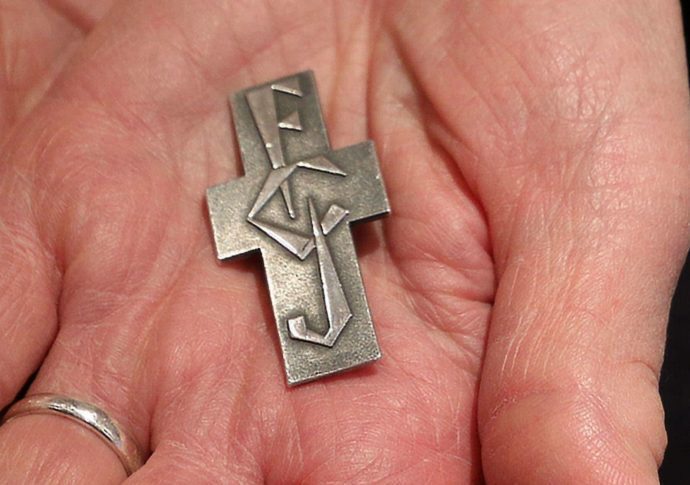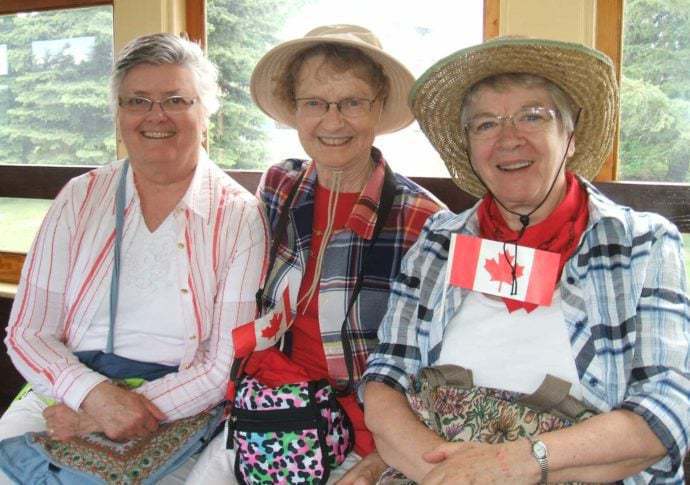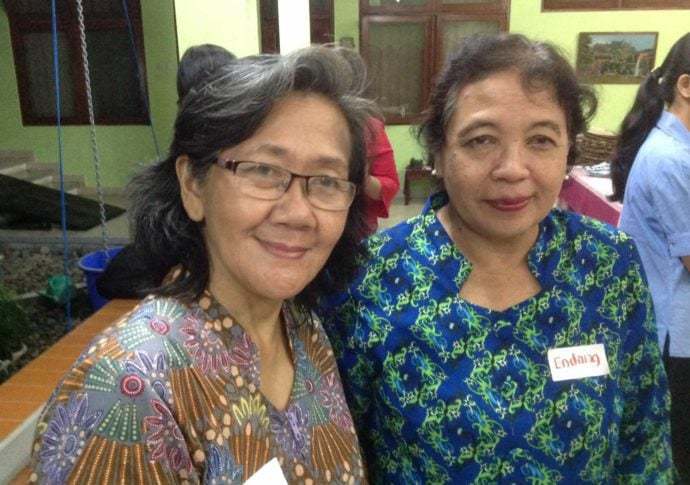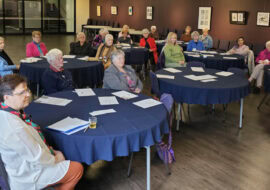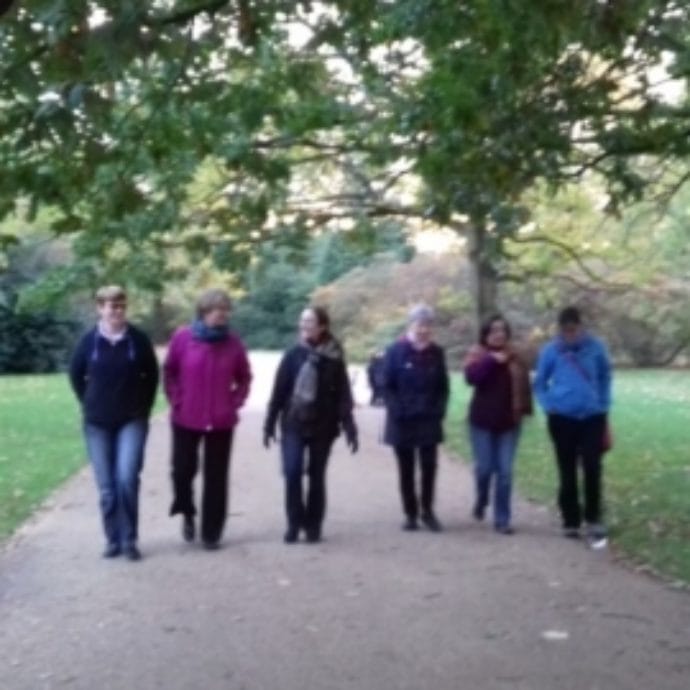Companionship is central to FCJ spirituality. Foremost is companionship with Jesus, of which a tangible expression is companionship with others. The root meaning of ‘companionship’ is to share the bread of life. Marie Madeleine, our Foundress, showed an understanding of this fundamental meaning of companionship, drawing her strength from the Eucharist.
This article explores ways in which, whatever our circumstances, we can share the bread of life – that is, live companionship. It was written by Julie, an FCJ Companion in Mission in Australia, and first appeared in our newsletter A Woman for our Time. Julie reflects on the question, ‘What practical ideas could you offer women looking for more meaning in their lives?’
Companionship is central to every culture but varies according to local norms. In Australia, it is normal for women to band together to achieve a shared goal, learning with and from each other. This is part of our history, inherited from our mothers and grandmothers. Learning a new skill and sharing it with other women is a joy.
What might you learn?
Learning to make a new ‘dish’ for the family meal is always popular. You can share this experience with other women friends, a professional group to which you belong, with your neighbours, or members of your local community. Encourage others to do likewise.
Within your new circles, discuss talents within the group. Does anyone know how to play cards, or play the piano? Could they share this with the group? Who would like to offer a session for learning such valuable skills?
As new ideas emerge in society, you could discuss the values of each. Be brave, pursue some and discard others. Any aspect of life could be the pathway to companionship. Sharing our life experiences widens our circle of friendship. These companions are your peers in growth.
Groups
From companionship, we develop friendship groups. Groups lift the spirits of those who are not used to engaging with others. They become a network of support and understanding.
In my family, my brother and his wife moved interstate with a new baby just six weeks old. A few days after their arrival, mother and baby set off for the local Community Health Centre. The Sister in Charge welcomed them and said she would introduce them to the other mothers and babies. This was a wonderful action and I am pleased to report that these babies are now women in their thirties and forties with their own babies. The mothers are still friends. Groups evolve. As your groups continue to meet, some members will drop off and others may join. A group, even if just two or three people, might change in focus.
Perhaps you discover a shared passion for discussing films. With the advent of myriad online streaming services like Netflix and Stan, this is very convenient. Your group might take turns to host a film and then discuss some points over a cup of tea. This is a sure way of attracting new members, sharing new ideas and perspectives. Through evolving and growing and sharing together, groups become your community.
Communities and a Big Idea
A community of women could find new meaning by taking hold of a ‘Big Idea’ and exploring its meaning together. The choice is open ended.
Take, for example, the tree. We all know trees! Most of us have regarded their beauty all our lives. You might even have a favourite tree – you remember sitting beneath its boughs, admiring its unique-ness. But did you know that recent studies have shown trees in the forest communicate with one another beneath the surface? If this big idea is of interest, you can explore the work of Canadian scientist, Suzanne Simard. She shares her story and discoveries in videos online.
Big Ideas capture the imagination, and become the platform for shared passions. Find your own Big Idea, research it, and engage others in your journey.
Communities and Crisis
In a crisis, community groups come forward to help those in need.
This was the Australian experience after the recent bushfires. In 2019-2020, the east coast of Australia endured a period of extreme bushfires in which Victoria alone, my home state, lost 5,500 homes. Across the country more than one million hectares burned, more than 1.1 million people were affected by smoke, and over one billion animals were killed. There were 33 deaths. There was huge local support as the fire passed through small townships. People across Australia contributed to the re-building of local communities.
Presently, every country would have specific needs arising from the pandemic. This gives us all great scope for helping our communities to recover. This is where our small groups in cities and towns, formed for other purposes and interests, can rally to help those in need.
Communities and Grief
Watching the popular television program ‘Australian Story’ one evening, I was alerted to the danger of button batteries as a choking hazard for children. Found in toys, and easily dropped on the ground, their small size and silvery colour entice children to swallow them.
The show told the story of a mother’s two-year old baby girl dying from swallowing a battery. When her baby became mysteriously ill and was rushed to hospital, an x-ray revealed the battery lodged in the infant’s oesophagus. She bled and died, leaving her parents distraught.
After some time, the child’s mother learned of a similar death in Queensland. She reached out to the mother of the second child lost. The two mothers met and bonded over their shared tragedy. After connecting, they decided to create an awareness program. They discovered new skills as they gathered support and took action.
What more practical example of women finding meaning than this one of two strangers connecting, and then working together to save the lives of other children? Are you inspired to find a serious need in your community and to take some action, not by going alone, but with a friend, a group or community of like-minded people?
Learning from the Lives of Others
Barack Obama, writing in the first volume of his personal experience as President of the United States, fills 700 pages with his reflections on life. Quite a read. Upon entering the White House, the President’s first action was to appoint his staff. Not just a few, but more than 5000 to serve their country in areas as broad as defence, law, finance, and international affairs. These jobs carried great responsibility, requiring dedication, long hours and hard work in service of the presidency.
I was impressed with the obvious concern President Obama had for the people who worked for him. Pressure seemed to be the order of the day. From time to time he walked around the cramped offices observing the working lives of these dedicated people. He described an occasion when he observed a particular group of women often silenced by men speaking over them—and with loud voices at team meetings, cutting them out of the debate. He arranged a special private group meeting for a particular group of women with an invitation to the White House residence for dinner.
The lives and lessons of others are a shortcut to our learning, expanding the catalogue of experiences on which we can draw for meaning in our own lives.
Read our newsletter A Woman for Our Time: Celebrating Marie Madeleine and Companionship, where this article first appeared. Check our Resources pages for other issues or visit our pages about her Marie Madeleine d’Houët, foundress of the FCJ Sisters, her life, the cause for her canonisation and her shrine in Paris.
Image: In 1958 Victoria was the first Australian State to adopt a floral emblem, the pink common heath






